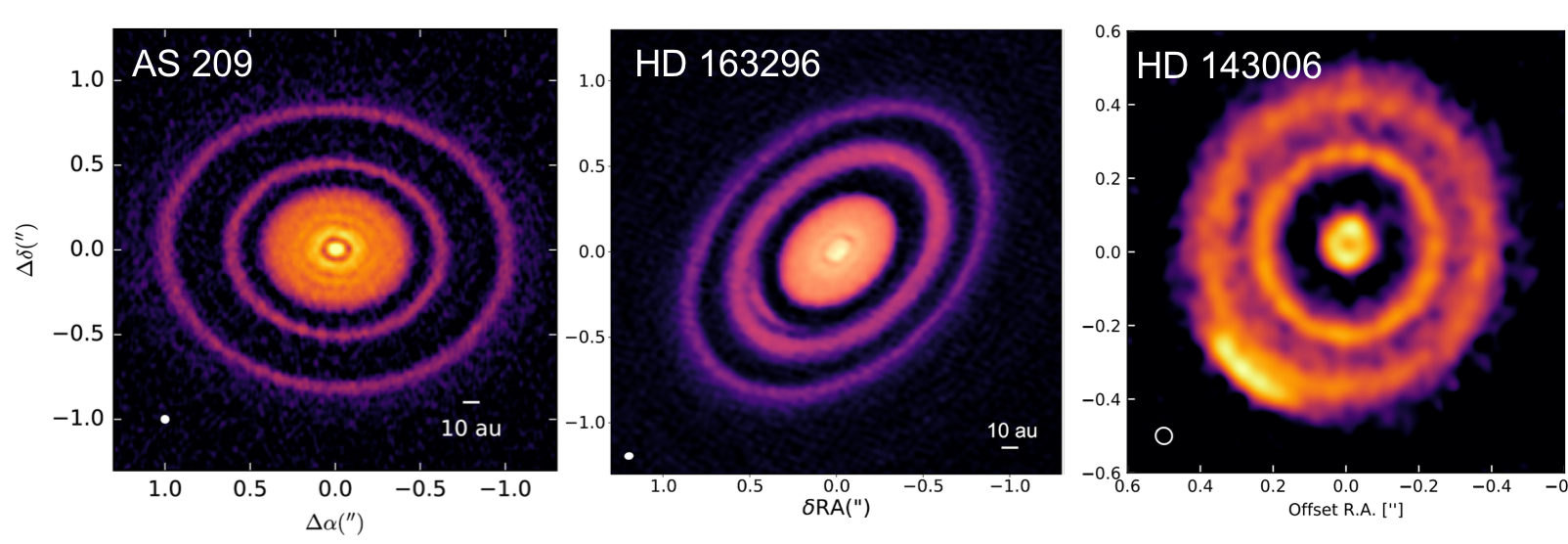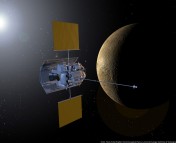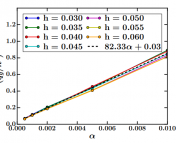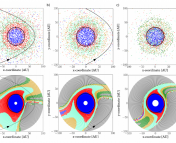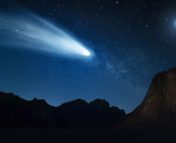*just to be clear, the aliens I am talking about are rocks and not alive nor intelligent. Sorry 🙁
Title: Hidden Planets: Implications from ‘Oumuamua and DSHARP
Authors: Malena Rice, Gregory Laughlin
First Author Institution: Department of Astronomy, Yale University
Status: Open access on arXiv
What if I told you that we have the opportunity to directly study other solar systems?
You’d be like, “guuurrrlll, say whaaaat??” And then I’d say:
Similar to how we can find chunks of Mars or pieces of the astroid belt on Earth, we have rocks from other solar systems flying around interstellar space, and a few just so happen to come into our solar system. This was only recently proven with the discovery of Interstellar Object (ISO) ‘Oumuamua. ‘Oumuamua was ejected from a different solar system and zoomed right into ours. Slipping between the Sun and Earth, it was detected as it started its journey back outside the solar system. ‘Oumuamua was the first object of its kind to be discovered, and it brings up the question, how many bits of other solar systems may be floating around and near by us? The answer to that question can have wide implications in our understanding of solar system formation, planet formation, and even compositions of other solar systems.
Today’s paper utilizes the ‘Oumuamua detection in addition to a recent high-resolution protoplanetary disk survey, DSHARP, to predict the number of future ISO detections. To put that number into context, the authors predict how many ISOs the new LSST survey might be able to see. To predict the average number density of ISOs (# of ISOs/volume of space) in our galaxy, astronomers have to come up with different possible methods of mass ejection from extra-solar systems. A prime opportunity to dislodge objects from a solar system takes place while the system is forming, and these dislodged objects can become ISOs. A newly forming solar system takes the form of a protoplanetary disk (see Figure 1). The images below are individual protoplanetary disks shining in ~millimeter wavelengths. At these wavelengths we are most sensitive to dust of a similar size, so millimeter-sized dust grains. Each millimeter sized dust grain is a candidate ISO; they can be flung out of their system by a newly forming massive planetesimal. These millimeter sized grains are much smaller than ‘Oumuamua, but still a good place to start in predicting how many ISOs are out there.
Three protoplanetary disks from the DSHARP survey. These images are sensitive to millimeter-sized dust grains, which show some real neat substructure like gaps (dark regions between bright regions) and rings (super bright regions, usually located next to a gap)
These DSHARP images also show incredible substructure, we see gaps and rings that we are pretty sure are caused by newly forming Neptune-Jupiter mass exoplanets. The authors show that a planet with the strongest effect on pushing material outside of their system would be a planet that is located farther away from the central star. These three disks show strong evidence for multiple planets farther than 5 AU from their central star (1AU is the distance from the Sun to Earth), so they are great examples of systems ejecting objects that become ISOs, like ‘Oumumama.
In order to come up with a mass ejection rate (just the rate at which mass is lost from the system), the authors set up simulations that had the same initial conditions as the three disk systems, and for each system they had 3 random populations of dust. By random, I mean their location and sizes were randomly distributed throughout the disk. So they had 9 total simulations that they let run for a week on a super computer which equalled about 20 million years of the protoplanetary disk’s life. They then determined how much mass had left the system after that time.
These authors came up with a function of mass ejected over time for millimeter sized grains, and from that, one can calculate an average number density of these particles in and around our galaxy (you also then need to assume a certain density of stars). They found that, on average, for every star there is about 0.09 Earth masses worth of millimeter sized dust. They used their data from these simulations to extrapolate up to a broader range of ISO sizes. After all, ‘Oumuamua and any interstellar interloper that we can hope to find in our solar system is going to be significantly larger than a few millimeters. If you assume some sort of power law distribution (put very simply, the larger the ISO is the less there is of it) you can then estimate the total mass ejected from systems similar to the three protoplanetary disks for any ISO size. In this paper, the authors found that over the disk’s lifetime, about 24 Earth masses worth of material would be ejected from these systems as ISOs with sizes ranging from a few millimeters to a few kilometers.
So how do we then make a guess as to how many of these ISOs LSST will see over its lifetime? LSST will be looking at huge swatches of the sky every night for 10 years and its main purpose is to look at far away things like galaxies. Thus the authors make an estimate of how many ISOs LSST will detect that are at least 5 AU away from us. There are many factors that go into this calculation, including the reflectivity, size, and distance of the ISO. This paper suggests that LSST will observe several ‘Oumuamua-sized objects (greater that ~15m) and hundreds of interstellar friendos visiting our solar system with radii at least 1 meter each year! That’s so many! It’s a much higher estimate than other papers, many of which were much more pessimistic predicting LSST will see none at all. What this paper did differently is to utilize brand-new high resolution images of these early systems from which ISOs form in.
LSST’s main goals are to search for dark matter and answer questions about the formation and composition of our universe. While in the process, it will be able to answer questions related to more Earthly subjects. Not only answering questions like ‘How did the universe form?’ but questions like ‘is our solar system unique?’.

